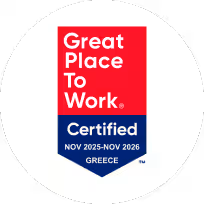Navigating Complexity in GCC Family Conglomerates Through Modern Governance and Legacy Alignment

Discussion with Hani Saadi
In the evolving economic landscape of the GCC, family-owned conglomerates face a dual imperative: honoring deep-rooted legacies while driving modern, sustainable growth. Hani Saadi, a seasoned strategy executive with over two decades of experience across multinational firms and diversified family groups in Saudi Arabia, Kuwait, and the UAE, shares his insights into how these powerful entities can future-proof their models. From governance design and succession planning to public-private partnerships and organizational culture, Saadi draws on his extensive leadership roles at companies like SABIC, STC, Mulla Group, and Aelan Brothers Holding to outline pragmatic strategies that work.
Legacy and Modernization: Finding the Right Balance
Many family conglomerates are built on decades-old values such as loyalty, integrity, and reputation—the hallmarks of their founders. Yet, as these businesses scale, they must modernize or risk becoming obsolete. Hani Saadi stresses that modernization must remain grounded in these core tenets: “Stick to what makes you strong in terms of reputation, integrity, customer service, and building on your employees”.
The challenge, however, is generational. As second and third-generation leaders come into play, there's often a shift in mindset—sometimes prioritizing operational efficiency and aggressive growth over heritage. “Some newer family groups start acting as private companies and move towards more operational or growth-oriented core values”, Saadi observes. This disconnect can weaken the very foundation that propelled the company’s early success. He cautions against neglecting the founder’s ethos: “You don’t leave behind what made you strong—the family values, the spirit of the founder”.
The path forward, Saadi emphasizes, lies in professionalization paired with trust-based delegation. Rather than relying on a centralized, one-man-show model, modernizing family conglomerates must build institutional capability by empowering specialists. “That becomes very hard for one person to control. You need to let the experts that you've brought on board manage that”, he says. But trust is the cornerstone—particularly in cultures where leadership has historically equated to control. “That’s the tricky part”, Saadi admits. “How much level of control do I need versus how much level of growth and expansion do I need?”.
%20Legacy%20and%20modernization%20finding%20the%20right%20balance%20-%20new.png)
Governance That Adapts Without Fragmenting
Governance is foundational to sustainability in multi-sector family groups, but standardization must come first. “When you customize to every single person, you will have 15 different versions of your framework”, Saadi warns. “You cannot manage. You cannot control it”.
To avoid fragmentation, Saadi’s team built a core framework and adapted it based on operational patterns. “We started grouping similar sectors”, he explains. “Services sectors we give them a more nimble, faster process. Industry-heavy or technology-heavy will have their own”. The result: three streamlined governance variants aligned to sector needs, yet rooted in a common structure.
Tailoring also extended to end-use cases like JVs, M&A, or PPPs. “Instead of giving everybody what they want, we created a system where the cycle changes slightly, not the whole process”, he says. “So it’s still the same gates we do, but with a modified rhythm”. This preserved consistency while allowing functional flexibility.
Still, Saadi cautions against compromising standards for speed. “If you open up the governance, then you don’t have governance”, he states. Rushing the process erodes its power. “We found out that when people go through your governance framework fast, it loses its effectiveness of governing”, he explains. “Investments that shouldn’t have gone through were happening, partnerships that should not have been done were signed”.
Aligning Multi-Generational Stakeholders
In GCC family conglomerates, aligning multi-generational family interests with those of executives and external investors is a persistent challenge. Without clear structures, strategy can become reactive and vulnerable to personal influence. Saadi emphasizes institutionalizing governance to ensure decisions are based on merit and operational logic—not legacy or hierarchy.
It begins with a family constitution and council to define decision rights and reduce generational friction. “It gives decision rights within the family and the family council—and through them to the board”, Saadi explains. This formalization sets boundaries between ownership and management.
Equally important is establishing semi-independent boards to shift focus from personalities to business rationale. “It becomes more this business idea versus that business idea”, he adds. For execution, operational committees with internal and external experts help stress-test decisions. “If it’s a manufacturing project, bring in a globally recognized expert”, Saadi annotates.
Finally, Saadi warns against internal politics: “Try to steer away from the personal preferences of one family member versus the other”. Neutrality and transparency, he notes, are key to preserving strategic clarity. Done right, this multi-layered governance boosts both internal alignment and external credibility.
%20Aligning%20multi%20generational%20stakeholders%20-%20new.png)
Succession Planning as a Strategic Lever
Succession is one of the most sensitive and impactful challenges for family conglomerates. According to Saadi, the process starts well before a title is passed down—it begins with mindset. “There needs to be something away from the company in terms of the mindset of the children”, he explains. Parents must instill a sense of responsibility and engagement early on, framing the business as a place where their children are expected to be active contributors.
Practical exposure comes next. Many families integrate younger generations through internships or summer roles that match their natural abilities. “If someone is good with math, I might put them in finance. If they’re good with people, then maybe marketing or HR”, Saadi says. These placements provide valuable operational insight while laying the foundation for leadership. He emphasizes the importance of starting from the bottom—even if the trajectory is accelerated—so successors earn their roles, not inherit them.
Discipline and meritocracy are essential. “You need to be hard on these children more than on the other employees because they need to be leaders soon enough”, Saadi says. Without clear accountability, successors risk losing legitimacy among staff and stakeholders. Rigorous development, on the other hand, builds both credibility and commitment.
“The better you do it, the better the leaders would grow into your organization”, Saadi reflects. “And if you're lax, your second and third generation are not as dedicated or as educated in the business as they should be”.
Public Sector Engagement and Strategic Independence
Engaging with the public sector presents family conglomerates in the GCC with unique opportunities for long-term growth—especially through public-private partnerships (PPPs). Yet, these relationships also demand a high level of strategic caution. “Each country has a different PPP model”, Saadi notes “and even within the same country, ministries operate differently”. This means that a one-size-fits-all approach won’t work; companies must customize their engagement strategy based on the sector, counterpart, and regulatory environment.
To navigate these dynamics effectively, Saadi stresses the need for rigorous internal governance and due diligence. “You need to be very clear on the governance process and walk away from certain deals if they’re not good for you”, he advises. This includes validating opportunities using both internal assessments and external advisors, ensuring any partnership aligns with long-term strategic and financial goals.
Partner alignment is another critical factor. Misaligned incentives or expertise can jeopardize even the most promising opportunities. “If your technical partner isn’t on the same page, they may position the agreement in their favor”, warns Saadi. Governments often have the upper hand in regulation and capital access, so family groups must be particularly careful when negotiating terms.
The Future of Family Conglomerates in the GCC
Saadi closes with a reminder that while governments in the GCC often serve as the engine for economic development, their ambitions rely significantly on effective collaboration with the private sector. “Without these family groups, whether big or small, real growth doesn’t happen”, he adds “typically what governments are trying to do is engage the private sector to get them more involved because then it frees up government resources into other social or growth programs”.
However, family groups cannot simply rely on their historic stature to remain competitive. To truly contribute and thrive in this evolving landscape, they must evolve their operating models. Saadi warns against rigid government involvement in sectors where private players could bring innovation and agility. “If the government is participating directly they will get preferential treatment and a lot of these smaller groups would probably step out of that business activity which is detrimental”, Saadi explains.
To stay resilient and relevant, family conglomerates must blend legacy with innovation. That means institutionalizing systems of governance, cultivating top-tier talent, and forming smart partnerships that preserve independence while enabling growth. “If they're doing their job right—protecting and nurturing their employees—they can create a very long tenure”, Saadi reflects. “But if they try to be more like independent corporates and focus only on the bottom line, they lose that family culture that once gave them a competitive edge”, he concludes.
-p-1600.avif)










.avif)









-01.avif)


